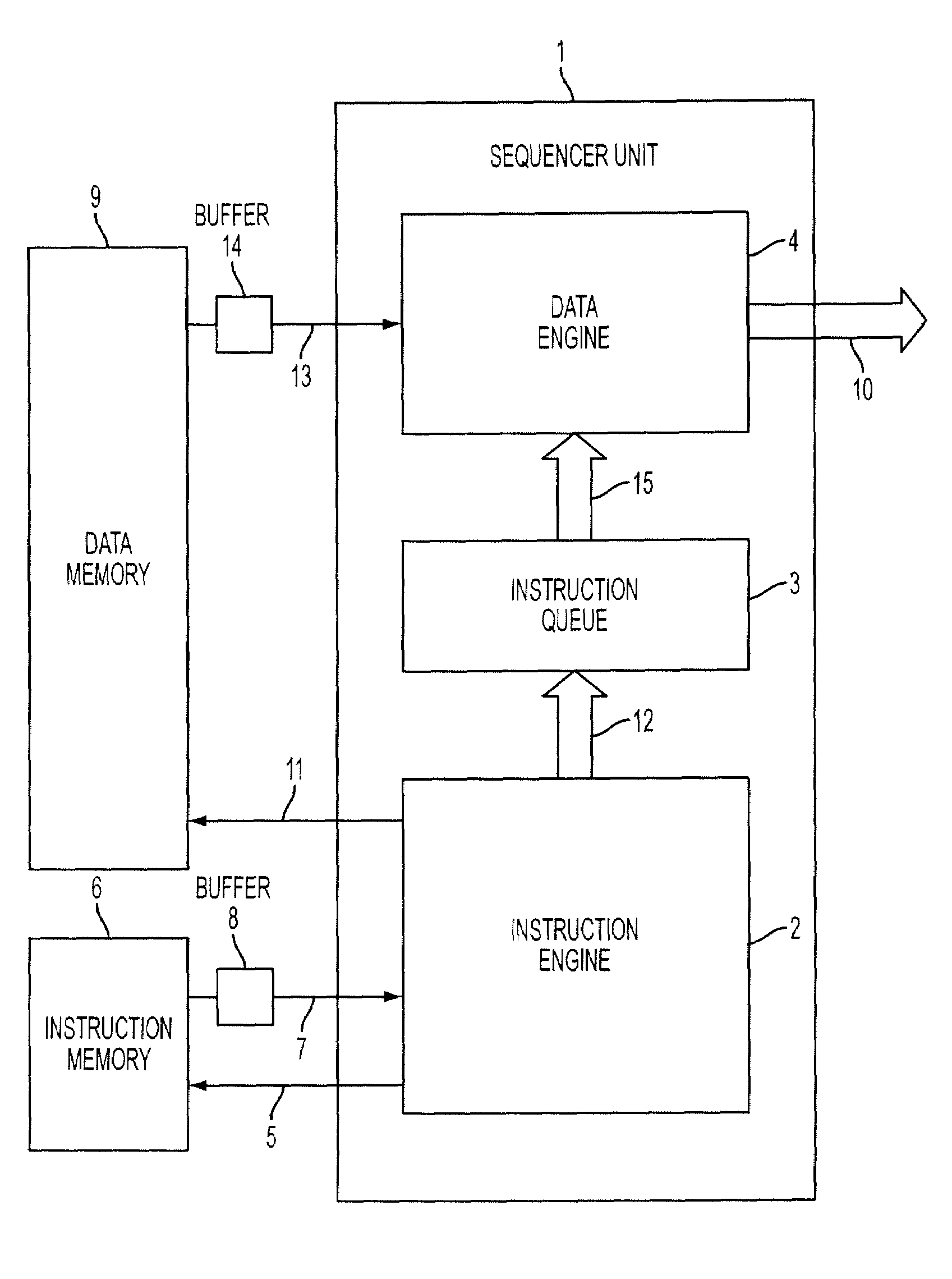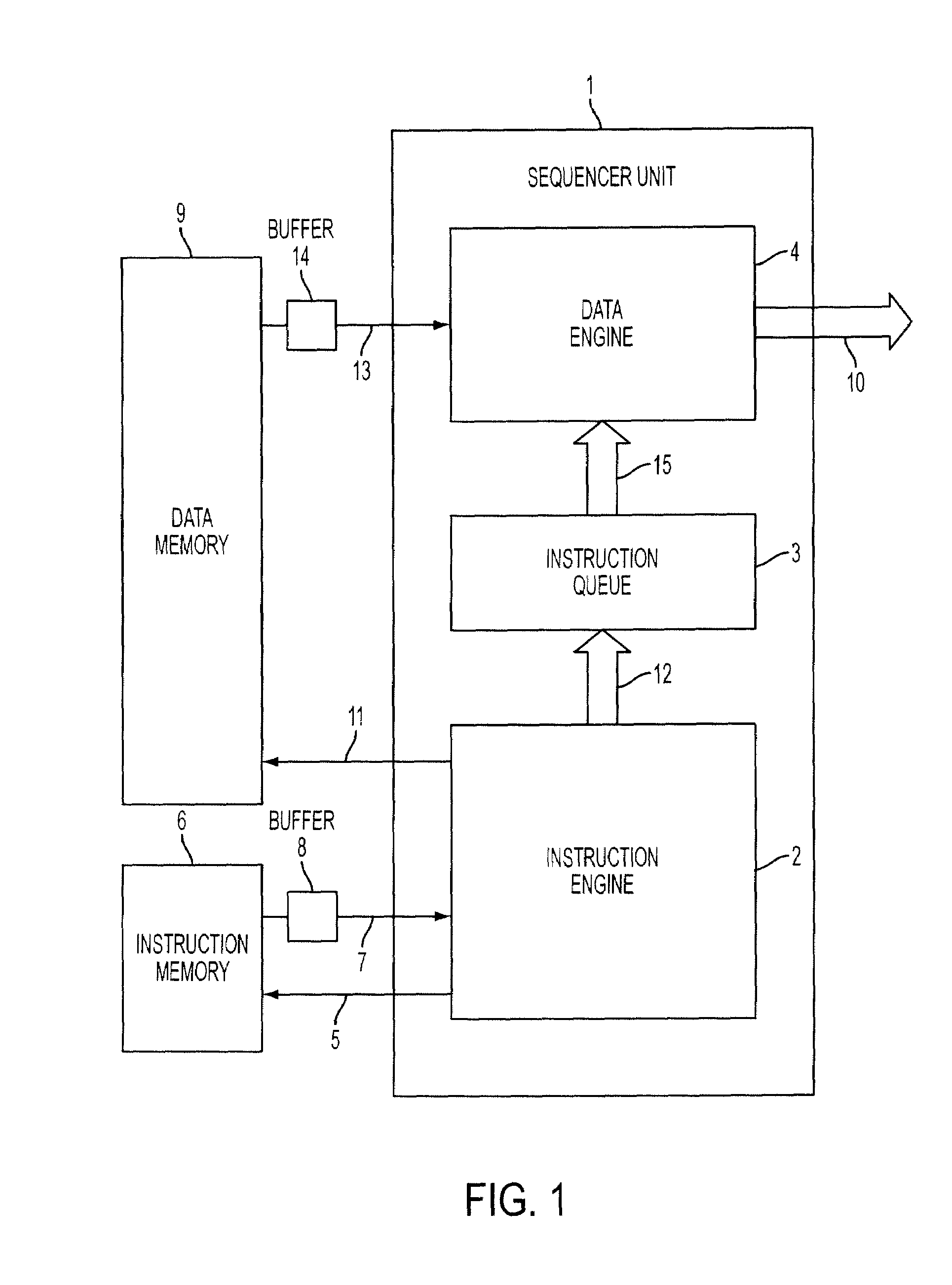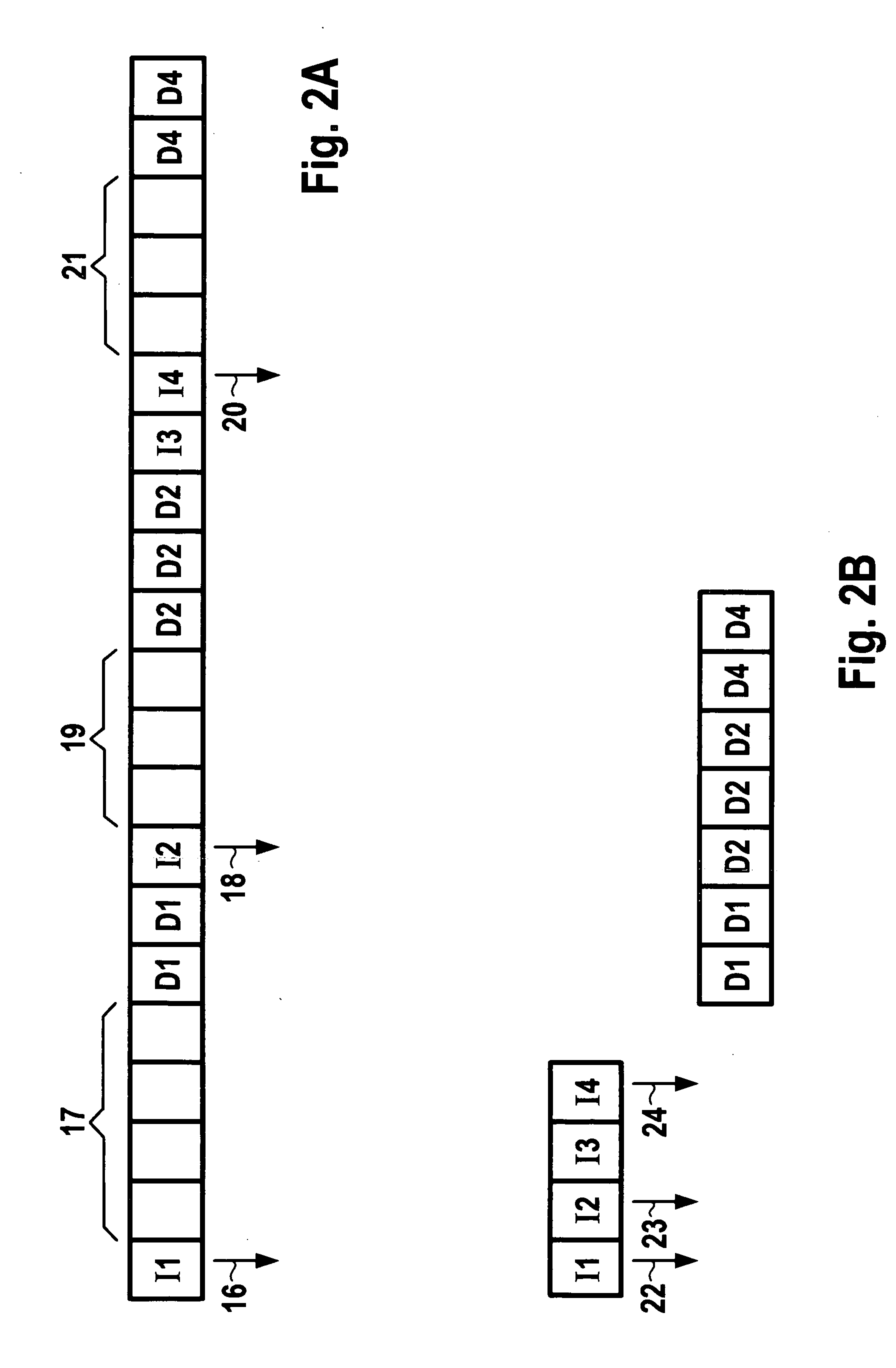Sequencer unit with instruction buffering
a sequencer and instruction technology, applied in the field of sequencer units, can solve the problems of idle time, inability to fetch requested data, and inability to retrieve requested data, so as to achieve cheaper and smaller solutions, simplify the set-up of sequencers, and reduce the effect of idle tim
- Summary
- Abstract
- Description
- Claims
- Application Information
AI Technical Summary
Benefits of technology
Problems solved by technology
Method used
Image
Examples
Embodiment Construction
[0041]In FIG. 1, the set-up of a sequencer unit according to an embodiment of the present invention is shown. The sequencer unit 1 comprises an instruction engine 2, an instruction queue 3, and a data engine 4. When the sequencer unit's operation is started, the instruction engine 2 forwards an instruction read request 5 to the instruction memory 6. The instruction read request 5 specifies a block of data that is to be read from the instruction memory 6. After the corresponding read access to the instruction memory 6 has been performed, the requested instructions 7 are provided to the instruction engine 2. There, a preprocessing of said instructions is performed. Whenever the preprocessing of a block of instructions that has been fetched from the instruction memory 6 is close to being completed, the instruction engine 2 will issue an instruction read request 5 for a subsequent block of instructions. The instruction memory 6 is preferable realized as an SRAM, because an SRAM allows f...
PUM
 Login to View More
Login to View More Abstract
Description
Claims
Application Information
 Login to View More
Login to View More - R&D
- Intellectual Property
- Life Sciences
- Materials
- Tech Scout
- Unparalleled Data Quality
- Higher Quality Content
- 60% Fewer Hallucinations
Browse by: Latest US Patents, China's latest patents, Technical Efficacy Thesaurus, Application Domain, Technology Topic, Popular Technical Reports.
© 2025 PatSnap. All rights reserved.Legal|Privacy policy|Modern Slavery Act Transparency Statement|Sitemap|About US| Contact US: help@patsnap.com



